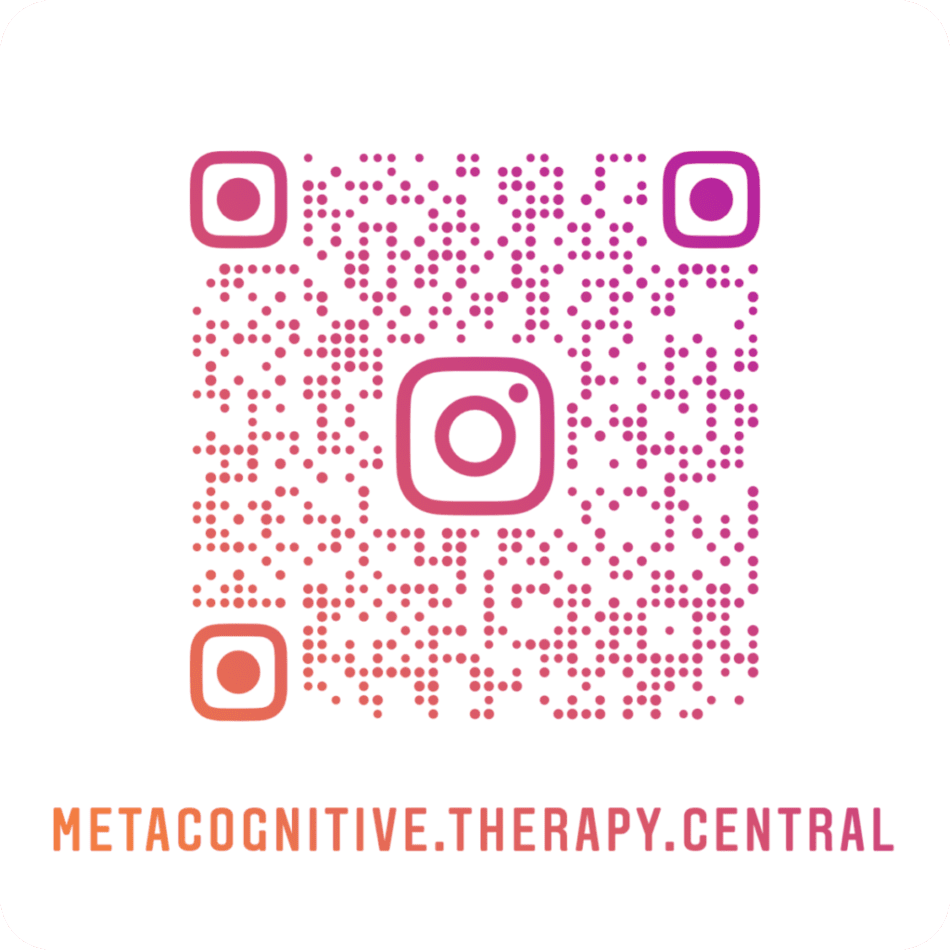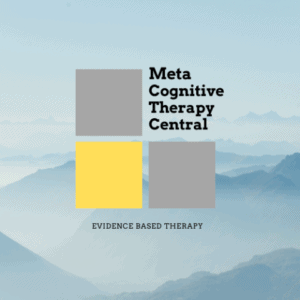
The Attention Training Technique (ATT) as part of Metacognitive Therapy already seems like a promising treatment for depression and anxiety.
ATT increases flexibility and control over one’s attention, improving the ability to shift attention away from ruminative thoughts and distractions and toward more relevant tasks like studying. ATT helps change false beliefs about the lack of control of one’s attention, which is prominent in ADHD.
ATT is part of Metacognitive therapy (MCT). MCT for ADHD challenges beliefs about attention, worry, and rumination and trains people with ADHD to disengage from irrelevant thoughts and resist distraction. MCT also strengthens attention skills through the attention training technique (15).
ATT is associated with increased executive control, which stands for problem-solving, flexible thinking, working memory, self-control, and emotional control (1).
ATT aims to stop inflexible, self-focused, and repetitive thinking and strengthen control over one’s attention. Reducing repetitive thinking and gaining flexible attention improves mental performance.
How can ATT improve cognitive performance?
The Attention training technique can help strengthen top-down executive control, interrupt unhelpful worry and rumination and strengthen the belief that you have full control over where you choose to pay attention.
ATT was developed by professor Adrian Wells as a part of Metacognitive therapy (MCT) to help reduce inflexible self-focused attention, worry, and rumination. According to MCT, inflexible self-focused attention (focusing entirely on negative thoughts and emotions and other internal “threats”) is connected to excessive worry and ruminations that, in turn, exacerbate stress and negative emotions.
Excessive worry and rumination make it harder to engage in rational thinking, problem-solving, engaging working memory, and other higher-level brain functions (2) associated with mental performance and productivity.
Persistent worry and rumination (for example, dwelling on negative and anxious thoughts for longer periods) also make it harder to retrieve information and can negatively affect one’s confidence (3), something people with ADHD struggle with.
Examples of negative thoughts that people worry and ruminate about:
“what if I fail this exam”
“others must think I’m stupid”

ATT can counteract the effects of persistent worry and rumination by helping people strengthen control over these negative thinking styles. ATT helps people learn that they can switch their attention away from negative thoughts (as well as switch their attention away from distractions, in the case of ADHD) and back to important tasks.
The reason this works is because of the way ATT is designed.
ATT consists of auditory attentional exercises that, according to professor Wells, require individuals to engage in executive control skills, including selective attention, divided attention, and attention switching(1)
You can read more about ATT in detail in this post.
In ATT, attention should focus on different sounds, while other sounds are ignored. People are instructed to focus their attention on selected sounds, switch between sounds, and focus on all sounds at the same time.
When someone listens to different sounds and shifts their attention back and forth in a cluster of competing sounds, they become more and more convinced that they control their attention:
I can control my attention despite any distractions
This is also called a metacognitive belief, which is a belief about our thinking and attention. This belief is then stored in the memory and gets activated the next time someone gets distracted. Instead of dwelling on the distraction or the thought they were distracted by, they remember that they can shift their attention back onto the task and do so accordingly.

Therefore, someone who practices ATT regularly will have an easier time shifting their focus back to studying or some other important task whenever they notice themselves drifting. Refocusing becomes easier because they believe in their ability to control their attention.
ATT also helps to control rumination and worry. And since reduced rumination and worry enhance concentration (because fewer cognitive resources are spent), it further strengthens the belief that people have full control over their attention.
A study from 2019 (7) showed that two doses of ATT helped the participants in the study quickly identify syllables on a screen while ignoring irrelevant noise coming from the opposite side into their ear.
The participants were also better able to ignore emotional stimuli and concentrate on a relevant task instead. This suggests that ATT can help improve task performance through learning to control one’s attention, and this can then help improve executive functions like planning, organizing, problem-solving, etc.
Learning to control attention can potentially help people become more productive in areas like work, studies, presentations, and problem-solving.
However, improved cognitive performance may not be a direct effect of ATT, but because worry and rumination are disrupted (since worry and rumination put a strain on executive functions) (9).

Can ATT reduce procrastination?
Procrastination involves delaying the start or completion of a task.
Everybody procrastinates. Some delay payments or appointments, while others delay chores, assignments, or preparing for exams. According to a study from 2011 (10), worrying was linked to procrastination in university students.
Usually, people start worrying because they believe that worrying is useful. They may start worrying a lot about the consequences of performing a task, their motivation for performing it, and their inability to cope with the negative consequences. This leads to intensified negative emotions, and in an attempt to control these emotions, people procrastinate.
“What if I mess up the presentation on Monday? They will think I am stupid. Then they will really find out who I am. I don’t even know what to prepare. This is too much; maybe I can do it later...”
Procrastination can also happen when people don’t know how to solve a specific problem.
“I really want to start a business; it is my biggest dream. But every time I think about it, I think that I don’t know where to start and what to do, which is overwhelming. It is much easier to procrastinate and instead watch movies and go out with my friends“
According to metacognitive therapy, procrastination is an unhelpful coping strategy that is used to control worry and negative emotions. People who don’t believe in their ability to control worry (and the negative emotions that excessive worrying creates) might use procrastination in an attempt to control their worry. However, procrastination can trigger more negative emotions like guilt, sadness, restlessness, and low self-esteem and lead to more worrying later.
ATT is already proven helpful in interrupting worrying by switching attention away from worrying thoughts. Therefore, learning that worrying can be stopped might reduce the need to procrastinate and, in turn, improve performance on difficult and uncomfortable tasks.
People procrastinate to control worry or uncomfortable emotions. ATT can help to stop worry and reduce procrastination.
Procrastination and perfectionism
Perfectionists worry and ruminate about their behavior, performance, life stresses, and their own ability to cope with these things. They typically have negative thoughts about failing and doubts about their actions and whether they can achieve important goals (13).
Perfectionists set goals that are difficult to achieve. That way, they put constant pressure on themselves to pursue impossible perfectionism, which inevitably leads to failure (13).
This, in turn, triggers them to worry and ruminate about it, leading to procrastination and avoidance in the future. Perfectionists worry and ruminate to anticipate future situations where performance
may not be “perfect.” And they ruminate about past situations to figure out why they have failed.
For example, when afraid of failing a class, a person with perfectionist tendencies decides to study for 4 hours each day, which is a difficult goal to achieve in addition to going to class, having spare time activities, and sleeping. Once the perfectionist realizes that they can’t keep up with their impossible study schedule, they begin to ruminate about their self-critical thoughts.
“I can’t do anything right“
“I am a failure“
“I don’t deserve to relax and have fun“
Excessive rumination and worry then lead to experiencing stress, anxiety, and sadness. Rumination also lowers motivation and can lead to avoiding studying.

For some people with perfectionist tendencies, their fear of failure can be so intense that they will work long hours, rechecking completed assignments and redoing tasks to distract themselves from their negative thoughts:
“I am not good enough“
“No one will respect me if I don’t do a perfect job“
Other strategies for coping with negative thoughts include delaying assignments and tasks and leaving them unfinished. These coping strategies, together with worry and rumination, are part of the cognitive attentional syndrome, CAS. According to Metacognitive therapy, CAS creates mental health problems like anxiety and depression.
Perfectionists worry and ruminate when they cannot live up to their impossible standards. Rumination and worry create anxiety which can lead to procrastination
According to professor Wells, the CAS (worry and rumination) can be disrupted by directing attention outward instead of dwelling on negative thoughts about, for example, performance failure. ATT can help people with perfectionistic tendencies to learn that they can control their attention and move it around flexibly when they experience self-critical thoughts and thoughts about failure.
However, this requires someone with perfectionism to understand that worrying and ruminating about their performance is not helpful but, in fact, can lead to procrastination and emotional stress.
Can ATT reduce test anxiety?

According to a study by Matthews (12), one of the founders of the theory behind MCT, test anxiety is related to worry and unhelpful coping strategies like avoidance.
In performance situations, for example, when taking a test or exam, people with test anxiety get triggered and withdraw their attention from the task because they start to worry. This leads to an exacerbation of anxiety which can affect performance negatively.
Studies show that worrying in examination settings is partially due to metacognitive beliefs that worrying is uncontrollable and dangerous.
I can’t stop worrying about my anxiety
I could make myself sick by worrying
Worrying in an examination setting can be triggered by inadequate coping skills because people don’t know how to focus their attention during the task and instead become distracted (12). This can be trained through ATT and SAR (situational attentional refocusing). SAR is an attention strategy designed by Wells to help people reverse their focus away from unhelpful coping like worrying and excessive self-focus, and back to the task at hand (9).
The idea is that once people realize that they can stay focused on the task in a stressful situation instead of fixating their focus on their anxiety, they will have less reason to worry and feel anxious about it in the first place.
Situational attentional refocusing (SAR): means focusing externally on things in your environment to gather information that disconfirms dysfunctional beliefs about yourself and others. SAR is not supposed to prevent uncomfortable emotions but is used to disrupt unhelpful attention patterns.
Summary
- Worrying and ruminating about negative thoughts and feelings can impair concentration, problem-solving and flexible thinking
- ATT (attention training technique) can help reduce rumination and worry and strengthen control over attention
- Reducing rumination and worry seems to help increase executive control, which stands for problem-solving, flexible thinking, working memory, self-control, and emotional control
- Rumination and worry create anxiety
- People procrastinate to control worry or uncomfortable emotions
- ATT can help to control worry and thereby reduce procrastination
- People with ADHD and test anxiety seem to believe that their attention can’t be controlled
- ATT and SAR (situational attentional refocusing) can help people with ADHD and test anxiety realize that they can focus on the task despite distractions.
It is possible to learn how to strengthen control over your attention. Go to this post to practice ATT.

References
- Knowles MM and Wells A (2018) Single Dose of the Attention Training Technique Increases Resting Alpha and Beta-Oscillations in Frontoparietal Brain Networks: A Randomized Controlled Comparison. Front. Psychol. 9:1768. doi: 10.3389/fpsyg.2018.01768
- Wells, A., & Matthews, G. (1994). Attention and emotion: A clinical perspective. Lawrence Erlbaum Associates, Inc.
- Kolubinski, D.C., Nikčević, A.V., Lawrence, J.A. et al. The Role of Metacognition in Self-Critical Rumination: An Investigation in Individuals Presenting with Low Self-Esteem. J Rat-Emo Cognitive-Behav Ther 34, 73–85 (2016). https://doi.org/10.1007/s10942-015-0230-y
- Photo by Christian Erfurt
- Photo by Jeswin Thomas
- Photo by Elisa Ventur
- Barth V, Heitland I, Kruger THC, Kahl KG, Sinke C and Winter L (2019) Shifting Instead of Drifting – Improving Attentional Performance by Means of the Attention Training Technique. Front. Psychol. 10:23 doi: 10.3389/fpsyg.2019.00023
- Photo by Malte Helmhold
- Wells, A. (2009). Metacognitive therapy for anxiety and depression. Guilford Press.
- Sadeghi, H. (2011). The Study of Relationship Between Meta Cognition Beliefs and Procrastination Among Students of Tabriz and Mohaghegh Ardabili Universities. Procedia – Social and Behavioral Sciences. 30. 287–291. 10.1016/j.sbspro.2011.10.057.
- Photo by Josefa ndiaz
- Matthews, G. (1999). Metacognition and maladaptive coping as components of test anxiety. Clinical Psychology & Psychotherapy.
- Macedo et al. Perfectionism and psychological distress: a review of the cognitive factors. IJCNMH 2014; 1:6
- Photo by Alexander Grey
- Wells, A., Fisher, P., Meta-Cognitive Therapy Without Metacognition: A Case of ADHD. Published Online: (2011) https://doi.org/10.1176/appi.ajp.2010.10101467
